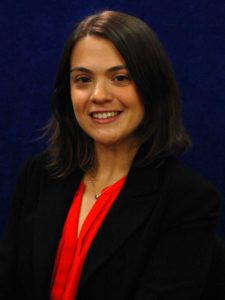Rachel Fishman, a policy analyst for the Education Policy Program at the New America Foundation, explains how students make their college-going and financing decisions
 Every September, over one million newly minted high school grads load up the family car with their possessions and head to State U or a private liberal arts college to spend the next four years coming of age in a cozy campus environment.
Every September, over one million newly minted high school grads load up the family car with their possessions and head to State U or a private liberal arts college to spend the next four years coming of age in a cozy campus environment.
Homecomings, studying on the quad, sitting in a classroom taught by a bespectacled professor with a tweed coat and patches on his elbows, and attending football games and frat parties during the weekend are common images in mainstream media and movies about college life.
The problem is that this image of college is far from accurate. And it prevents researchers and policymakers from crafting policies that will improve the outcomes of all students, not just this traditional archetype.
For this reason, New America’s Education Policy Program, with generous support from Lumina Foundation, aims to refocus national attention on all students by fielding a survey that mimics the incoming undergraduate higher education population. We’re embarking on this research to better understand how students make their college-going and financing decisions.
Currently, the research base on how students—especially disadvantaged and “nontraditional” students—decide to attend and pay for college is incredibly thin. Surveys such as Sallie Mae’s annual How America Pays for College and the Higher Education Research Institute’s The American Freshman: National Norms focus mainly on young adults going directly to college after high school graduation.
(Next page: How new research will help policymakers tailor their resources to have greater impact)
That’s why we have decided to embark on this work: It’s clear that the availability of information to students about where to go to college and how to finance it is unevenly distributed among students from different backgrounds. The traditionally aged students—like the ones in Sallie Mae’s survey—are often sought after by schools and inundated with information, nearly all of it distorted through the lenses of marketing and commercial rankings. Less advantaged students, who are largely missing from the national conversation about higher education decision-making, have little guidance or information available and are usually constrained by their location.
In recent years, several organizations have worked to fill the information void, but they tend to focus on traditional students. Consumer tools like the College Board’s Big Future and the U.S. Department of Education’s College Scorecard seek to provide students with information like what majors a college offers, what the average out-of-pocket costs are for similar students, and the average or median student loan debt for a borrower. But this information is provided without understanding whether prospective students understand this data and/or find it useful for their college search process.
The truth is that data on how students come to know what they know, why they believe what they do, and ultimately how they incorporate information into college choice is simply unavailable. This survey will help us better understand how all students make their decisions and in turn, will help policymakers and college-access advocates tailor their resources to have greater impact.
We look forward to fielding the survey this October and will begin to analyze the results this winter. We will begin to publish the results this spring and summer, shedding new light on how students decide how to plan and pay for college. If you have any questions about the survey, please contact me at fishmanr@newamerica.org.
Rachel Fishman is a policy analyst for the Education Policy Program at the New America Foundation. This article originally appeared in Ed Central.

